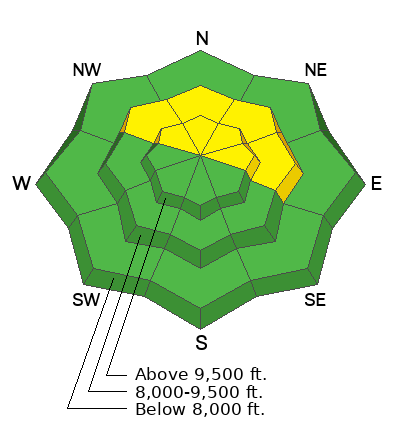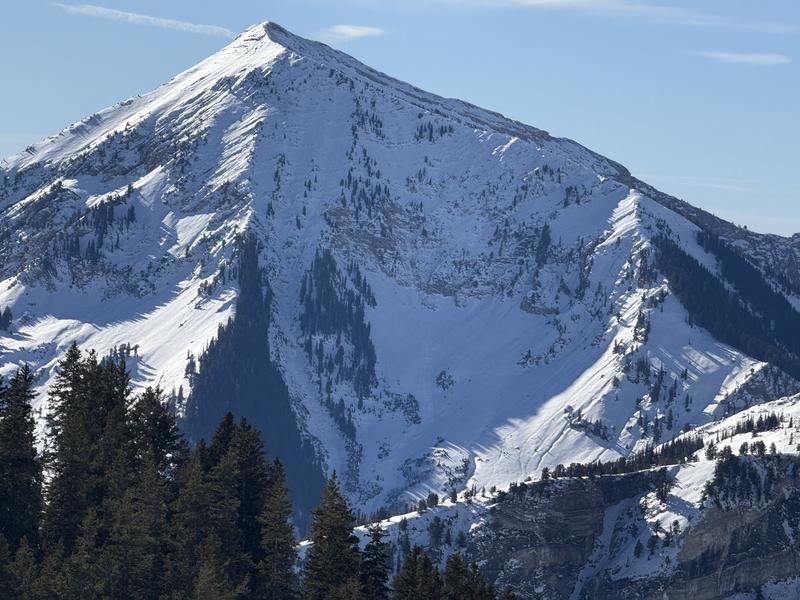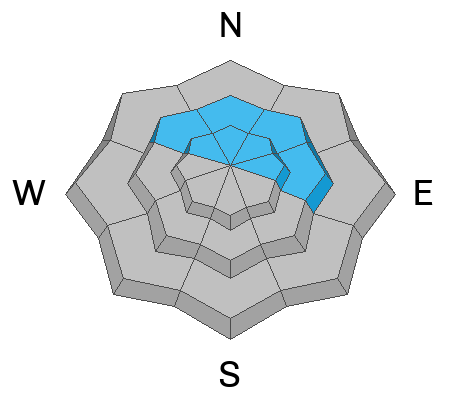Forecast for the Provo Area Mountains

Issued by Trent Meisenheimer on
Monday morning, December 2, 2024
Monday morning, December 2, 2024
The avalanche danger is MODERATE on mid and upper-elevation slopes facing northwest through east and upper-elevation slopes facing southeast and west. In this terrain, human-triggered avalanches failing on a Persistent Weak Layer 1-2 feet deep and up to 100 feet wide are possible. The most suspect slopes will be ones loaded by the wind.
Heads up: Extra caution is advised in the mountains south of Provo Canyon Road (Hwy 189), which includes Cascade and Provo Peak environs. Here, we saw large and destructive avalanches last week, as we think this half of the range revived the loin's share of wind and water weight.
Heads up: Extra caution is advised in the mountains south of Provo Canyon Road (Hwy 189), which includes Cascade and Provo Peak environs. Here, we saw large and destructive avalanches last week, as we think this half of the range revived the loin's share of wind and water weight.

Low
Moderate
Considerable
High
Extreme
Learn how to read the forecast here








